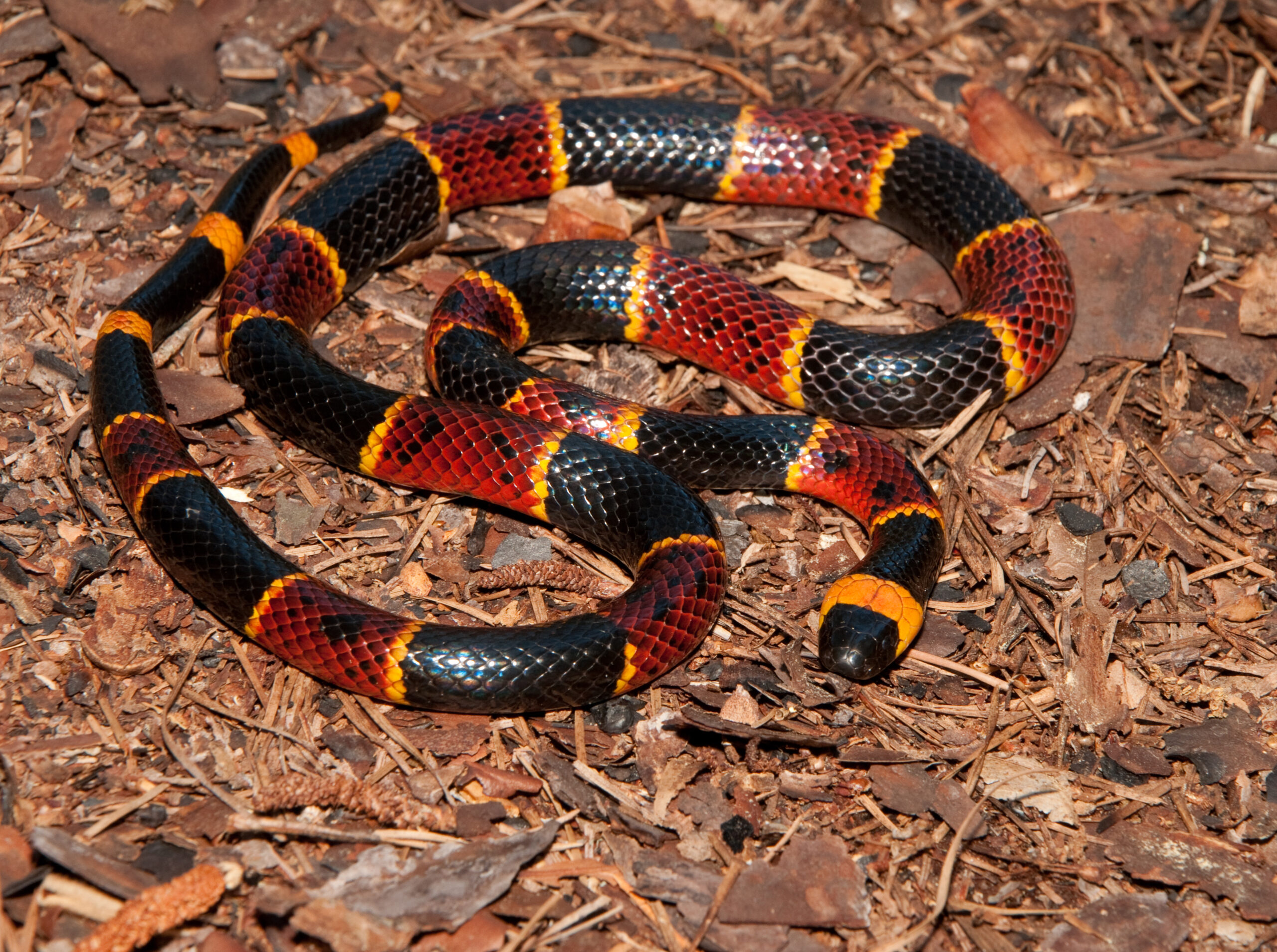Any time you and your best friend are outdoors, there’s a chance that you’ll encounter wildlife. And if you encounter a snake? Your dog could end up bitten.
According to the Morris Animal Foundation, approximately 150,000 dogs and cats are bitten by venomous snakes in the United States every year—and that’s not even including pets bitten by non-venomous snakes. While hopefully your dog will never go toe-to-toe with a snake, it’s a good idea to be prepared so you know what to do, just in case.
Symptoms of snake bites on dogs
The symptoms of a snake bite will vary depending on whether they were bitten by a venomous or non-venomous snake.
Non-venomous snakes
If your dog was bitten by a non-venomous snake, you may notice several symptoms:
- Puncture wounds in the skin
- Bleeding from the puncture wounds
- Swelling and bruising developing around the bite
- Pain around the bite
- Infection
There are about 25 species of non-venomous snakes in North America, but here are the three most common ones:
- Garter snakes. Found throughout North America, garter snakes prefer to hang in forests, fields, and lawns with water nearby.
- Boa constrictors. Boa constrictors are found in Mexico, and are sometimes kept as pets. They prefer a variety of habitats from tropical forests to deserts.
- Kingsnakes. Kingsnakes live in the eastern and southern United States. You’ll most often find them in swampy areas or by rivers.
Venomous snakes
If your dog was bitten by a venomous snake, you may notice multiple life-threatening symptoms, which will need to be treated by a vet right away:
- Rapid swelling of the bite wound
- Discoloration of the bite site and surrounding tissue damage
- Excessive salivation and drooling
- Shallow, rapid, labored breathing
- Shaking and muscle tremors
- Vomiting
- Dilated pupils
- Limb weakness and collapse
- Blood in the urine and incontinence
- Paralysis and collapse
While there are about 25 species of venomous snakes in North America, these four species are the most common:
- Rattlesnakes. Rattlesnakes are found almost everywhere in the United States, but they are particularly common in the Southwest.
- Copperheads. Copperheads are found in the eastern and central United States, and they prefer dry, rocky areas.
- Cottonmouths. Cottonmouths, also called “Water Moccasins”, are found in the southeastern states including: South Carolina, Tennessee, Kentucky, Alabama, Virginia, Louisiana, Florida, Texas, and Arkansas. They prefer freshwater habitats, wetlands, and swamps.
- Coral snakes. Coral snakes are located in the southern United States, ranging from Arizona to Florida. Despite being some of the most toxic snakes in the country, their small fangs limit the amount of venom they can inject in a single bite.

What should I do if my dog is bitten by a snake?
If your dog is bitten by a snake, it’s important to quickly get your pup veterinary attention:
- Call your vet right away. Find out if you should go to their office or if you will need to go to the local emergency vet.
- Try to photograph the snake. If you can’t snap a picture safely, try to commit the snake’s features to memory, so the vet can determine the species of snake. Don’t try to catch the snake, which could put your safety at risk too.
- Muzzle your dog. Snake bites in dogs are very painful, and even though your pup loves you, they might bite when you try to move them.
- Keep the location of the bite lower than the level of your dog’s heart. This will slow the spread of venom throughout your dog’s body.
- Carry your dog to the car. This might not be possible, but if you can, it’s best if your dog moves as little as possible after being bitten.
- Keep your dog quiet and relaxed during the trip to the vet. Keeping your pup calm and their heart rate normal is the best thing you can do for your dog before you get them to the vet.
What are the treatments for snake bites on dogs?
If your dog has a non-venomous bite, your vet will treat it like a puncture wound or cut. Your vet may clip the hair around the bite site, then thoroughly flush and clean the area. Your vet might prescribe antibiotics, anti-inflammatories, and pain medication.
If your dog has a venomous snake bite, then the treatment becomes much more complicated, and bites on areas like the eye and chest can be more difficult to treat. You may need to go to an emergency vet or veterinary hospital, where they may do some or all of the following:
- Administer antivenin (antivenom). To counteract the venom and minimize damage to your dog’s body
- Administer intravenous fluids. To promote blood circulation and help to counteract low blood pressure
- Treat your dog. With antibiotics, pain medications, and anti-inflammatory medications to prevent infection, keep your dog comfortable, and reduce swelling
In severe cases, your dog may also need blood transfusions to encourage clotting and stop significant bleeding.
The cost of treating a snake bite can vary significantly depending on its severity and your dog’s symptoms. While clipping, cleaning and treating a non-venomous bite may cost less than $1,000, prices will depend on the veterinary office you go to, and will likely be higher for an emergency case.
If your dog needs antivenom treatments, those treatments can cost up to $5,000. That cost is on top of other medications and treatments needed, as well as your dog’s hospitalization, which can easily cost in the thousands of dollars for an overnight stay.
If your dog has an unpleasant run-in with a snake, dog health insurance, like coverage offered by a base Lemonade Pet accident & illness policy could help cover the costs of your pup’s treatments and medications following a bite.
What is the recovery process for a snake bite?
After your vet has performed a snake bite treatment, your dog will need some recovery time. If the bite was non-venomous, you can likely bring your dog home with you and monitor their progress. Your vet may recommend keeping your dog quiet for a few days, and you will need to be sure to finish any antibiotic course that your vet has prescribed.
If your dog’s snake bite was venomous, your dog will probably remain hospitalized for at least a few days for monitoring. Your dog’s prognosis will depend on factors like their age, overall health, the type of snake bite, amount of venom injected, and how quickly you were able to get vet treatment.
How can I prevent my dog from being bitten by a snake?
When it comes to avoiding snake bites, preparing yourself and your dog for an unexpected run-in is the best defense.
Avoid snakes where they live
The best way to keep your dog from getting bitten is to avoid snake encounters entirely. Keep your dog on a leash when you walk, and avoid areas where snakes often live, like long grass and wood piles.
You can also discourage snakes from making your yard a home through careful property maintenance. Keep your grass mowed, especially in areas like around the edges of your yard and under fences. Remove wood and rock piles, and regularly check your porch and steps to make sure there aren’t any snakes lurking.
Snake training
Dogs are often bit by snakes because they’re inquisitive and eagerly checking out this slithery creature they’ve just discovered. It’s crucial they learn early that these creatures aren’t friends or a toy.
For the safety of you and your dog, this isn’t the kind of thing you should just try at home.
Snake avoidance training is one of the only instances where it could be necessary to use an aversive method—like a shock collar—to teach your pooch a new behavior, according to Shuli Mantsur, the positive and science-based dog training professional behind Sit Down & Beyond.
Typically, Mantsur doesn’t condone the use of shock collars, or other training methods that could cause your pooch pain, fear, or intimidation. But if a pet owner has to choose between shock collar training or a rattlesnake bite, he encourages opting for the lesser (and less venomous) of two evils.
Once your pup is over six months old, they could be ready to start aversion training with a specialist. Using safely-muzzled rattlesnakes that are native to your area, paired with a low-level electronic stimulation collar for your dog, conditions the dog to fear and stay away from snakes. The training timeline as well as the level of intensity that each dog receives from the collar is catered to the specific dog.
Before we slither off…
Dogs can survive snake bites, even venomous ones, but it’s important that you quickly get your dog some vet help. Snake bites are considered veterinary emergencies, and the faster you are able to get your dog to a vet, the better their chances of making a full recovery.
Luckily, there are also plenty of steps you can take to minimize the chance of your dog ever encountering a snake, so you can enjoy the outdoors with your pup, without fearing a dangerous encounter.





